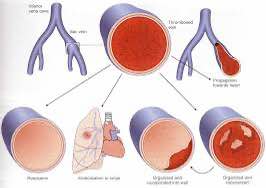Haemodynamic
OVERVIEW: In general terms, the topic of hemodynamics deals with flow and distribution of blood and fluids within the body. To maintain the correct amount of intravascular and extravascular volumes, the body must maintain both hydrostatic pressure and osmotic pressure. An imbalance in either of these two pressures results in an abnormal distribution of fluid in the cells or interstitial tissues (Figure 1). The term used to describe excessive amounts of fluid within the interstitial tissues or within cells is edema.
The process of coagulation serves to maintain the integrity of the vasculature in the event of disruption of the vascular wall. Inappropriate coagulation can have deleterious consequences, however. For example, abnormal coagulation can result in vessel occlusion; thus the process must be closely controlled. An adequate supply of blood to the tissues is vital because it provides oxygen and nutrients to the cells and removes toxic metabolites from the cells. An inadequate amount of blood flow to an organ is termed ischemia.
Shock can result from a decreased amount of blood (i.e., hypovolemic shock), failure of the heart to effectively pump the blood (i.e., cardiogenic shock), or generalized dilation of the vasculature system secondary to infection (i.e., septic shock).

